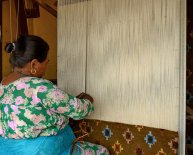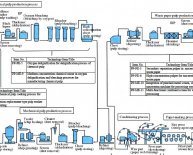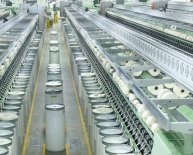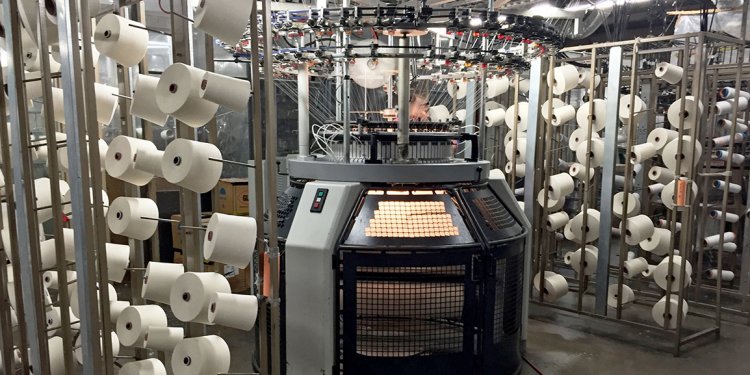
Cotton yarn manufacturing process
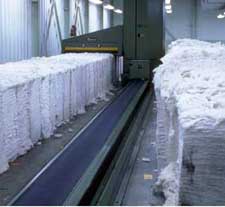 Yarn Production
Yarn Production
Modernization efforts have brought major changes to the U.S. textile industry. Equipment has been streamlined and many operations have been fully automated with computers. Machine speeds have greatly increased.
At most mills the opening of cotton bales is fully automated.
Lint from several bales is mixed and blended together to provide a uniform blend of fiber properties. To ensure that the new high-speed automated feeding equipment performs at peak efficiency and that fiber properties are consistent, computers group the bales for production/feeding according to fiber properties.
The blended lint is blown by air from the feeder through chutes to cleaning and carding machines that separate and align the fibers into a thin web. Carding machines can process cotton in excess of 100 pounds per hour. The web of fibers at the front of the card is then drawn through a funnel-shaped device called a trumpet, providing a soft, rope-like strand called a sliver (pronounced SLY-ver).
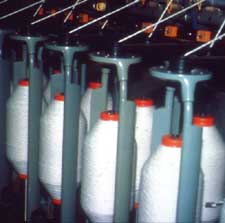 As many as eight strands of sliver are blended together in the drawing process. Drawing speeds have increased tremendously over the past few years and now can exceed 1, 500 feet per minute.
As many as eight strands of sliver are blended together in the drawing process. Drawing speeds have increased tremendously over the past few years and now can exceed 1, 500 feet per minute.
Roving frames draw or draft the slivers out even more thinly and add a gentle twist as the first step in ring spinning of yarn.
Ring spinning machines further draw the roving and add twist making it tighter and thinner until it reaches the yarn thickness or “count” needed for weaving or knitting fabric. The yarns can be twisted many times per inch.
Ring spinning frames continue to play a role in this country, but open-end spinning, with rotors that can spin five to six times as fast as a ring spinning machine, are becoming more widespread. In open-end spinning, yarn is produced directly from sliver. The roving process is eliminated.
Other spinning systems have also eliminated the need for roving, as well as addressing the key limitation of both ring and open-end spinning, which is mechanical twisting. These systems, air jet and Vortex, use compressed air currents to stabilize the yarn. By removing the mechanical twisting methods, air jet and Vortex are faster and more productive than any other short-staple spinning system.
After spinning, the yarns are tightly wound around bobbins or tubes and are ready for fabric forming. Ply yarns are two or more single yarns twisted together. Cord is plied yarn twisted together.

